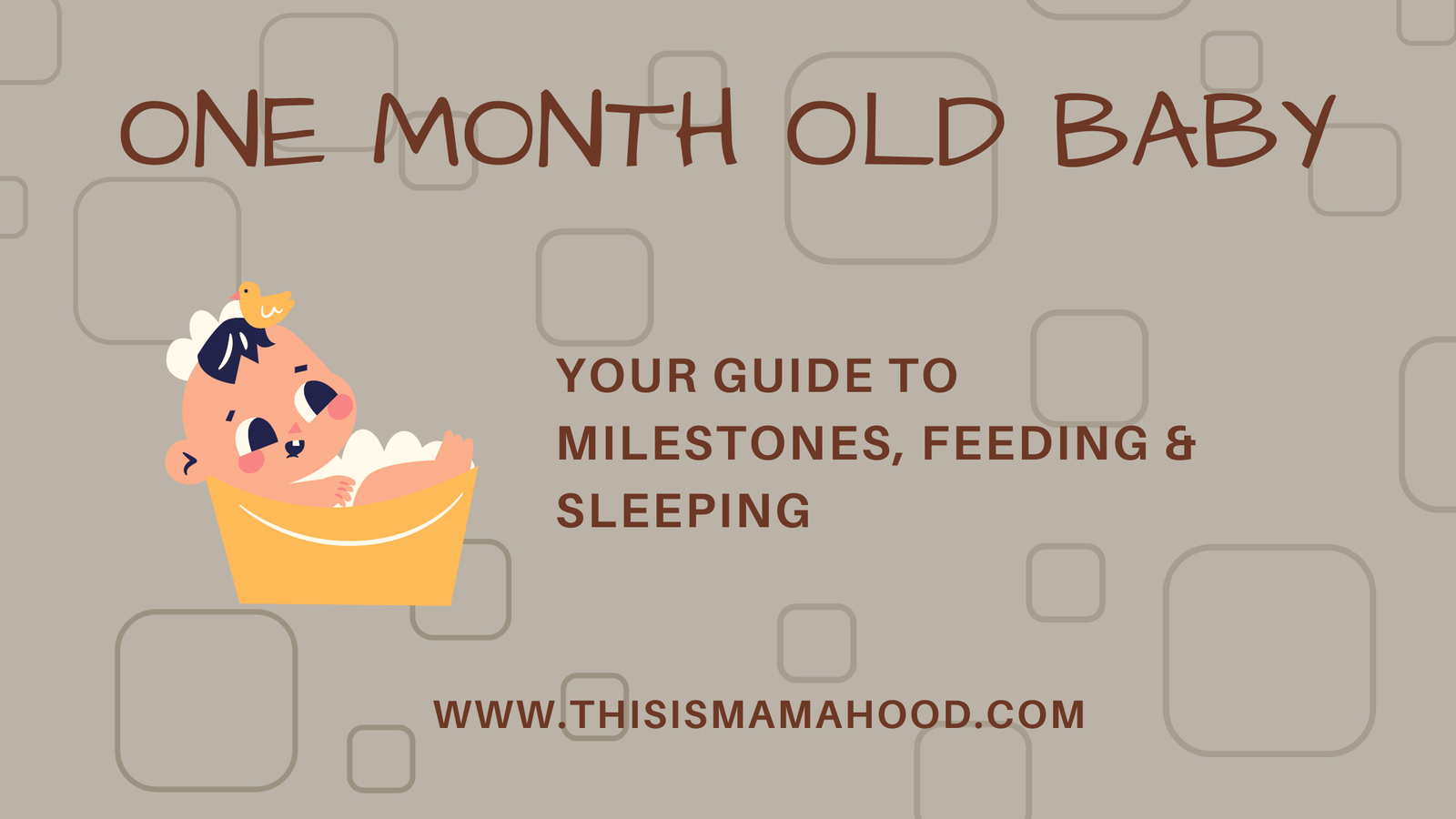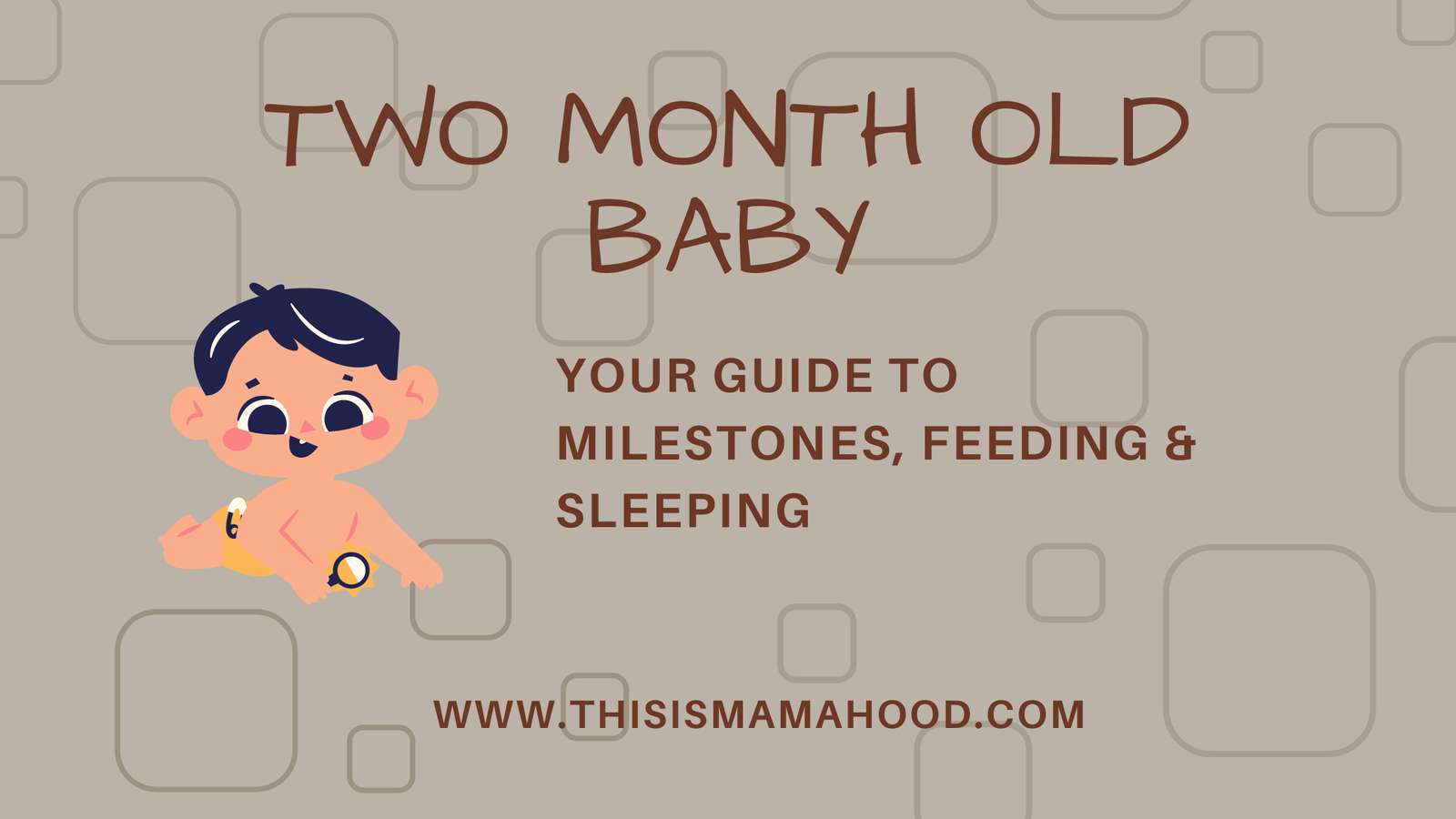Your baby is probably starting to stay awake for longer periods at a time now, and you may be wondering: How to play with a one-month-old baby? Now that your baby is getting used to life outside of the womb, they will have more extended wake periods and will need more stimulation. This guide will outline how to best play with your one-month-old to support their developmental milestones. Remember, though, that babies all develop at their own rates. Some babies may meet these milestones earlier, and others may meet them later on. If you are concerned about your child not meeting development milestones, consult your doctor.
Gross Motor Skills
What are gross motor skills?
Gross motor skills involve the large muscles of the body. They are skills that require using the arms, legs, and torso. Some examples of gross motor skills children acquire are running, jumping, and throwing.
What milestones should my one-month-old have for gross motor skills?
At one-month-old, your baby does not have much coordination when it comes to gross motor skills. At this point in their development, one-month-old babies should be able to move their arms and legs toward their bodies in jerky movements. They should also start gaining control of their core and neck muscles. Babies at this age will begin to briefly hold their head up on their own. When placed on their tummy, you should see your baby lift their head for a few seconds before it falls back towards the floor.
How to play with a one-month-old to develop gross motor skills?
1. Tummy Time
Tummy time is the most important way to play with your baby to develop their gross motor skills during their early stages of development. What is tummy time? Tummy time is the time that your baby spends laying down on their front. You will want to lay down a blanket or find a clean area on the floor and place your baby down on their stomach. From there, you can place items around your baby to encourage them to lift their head and look around. High-contrast photos and mirrors are great items that your baby would love to look at.
It is also good to note that tummy time does not always have to be on the floor. The time you spend with your baby on your chest can also be considered tummy time. As long as your baby has the chance to use their core and neck muscles, it will help to develop these gross motor skills.
2. Attach rattles to wrists and ankles
In addition to core and neck muscles, you should also encourage your baby to work their arm and leg muscles. This can include attaching rattles to their wrists and feet. Hearing the rattles and seeing them move when your baby moves their arms and legs may excite your baby, and in turn, cause them to move even more.
Fine Motor Skills
What are fine motor skills?
Fine motor skills involve the smaller muscles of our bodies, mainly in our wrists and hands. Skills that require fine motor skills include picking up and holding items, as well as writing and tying shoelaces.
What milestones should my one-month-old have for fine motor skills?
A one-month-old baby does not have any major milestones relating to fine motor skills. Babies at this age will generally keep their hands balled up in fists. They will often relax their hands and open them up when they are full and calm; however, this is more of a reflex rather than an intentional movement. One-month-old babies also exhibit the palmer reflex. This reflex occurs when an item is placed into a newborn’s hand, and in response, they will close their fingers around the item. The palmer reflex likely helps to create muscle memory and basic motor abilities to later obtain the ability to do the same movements voluntarily.
How to play with a one-month-old to develop fine motor skills?
1. Use toys & playmats
You may notice that your baby will start moving their hands toward objects. Therefore, in order to support the development of their fine motor skills, it is best to place items within reach of your baby. This may include placing some toys within arm’s reach when your baby has tummy time, or if your baby is on their back, place them on a playmat with hanging toys above them. When your baby reaches their arms out and accidentally hits something, this will lead to instant gratification, which will result in them continuing to do that same movement. This encourages them to keep reaching up to the dangling toys and eventually, they will start opening their hands and trying to grab onto them.
2. Use palmer reflex
You can also take advantage of their palmer reflex to encourage them to grab and hold onto items. Gently open your baby’s hand and place a small, easy-to-hold item in the middle of their palm. The palmer reflex will allow your baby to close their fingers around the object and they will hold on to it. This will aid in developing the muscle movement and memory to begin to hold objects on their own.

Speech and Language
What are speech and language skills?
Speech and language skills are the skills required to express and produce sounds, as well as understand the words of others. There are two main categories of speech and language: expressive language and receptive language. Expressive language is how you express yourself through words, while receptive language is how you understand the words and sounds of others.
What milestones should my one-month-old have for speech and language skills?
When it comes to speech and language milestones for a one-month-old, expressive language is at the core. Your baby should be starting to make noises other than just crying. You will notice them start to coo or gurgle. They will not be able to understand what you say, however, they may look toward your direction when hearing you speak.
How to play with a one-month-old to develop their speech and language skills?
1. Talk to your baby
The best way to develop your one-month-old baby’s speech and language skills through play is simply by talking to them. Even though they will not understand you, it is beneficial to hear language often. So read books, narrate your day, and talk about objects around the house.
2. Make exaggerated noises
When having one on one time with your baby, hold them close, about 12 inches from your face, and make exaggerated noises and words toward them. Make sure they can see you and have eye contact.
3. Take turns
You should also start teaching them about the turn-taking of speech (I talk, you talk, I talk). This means responding to your baby’s noises, waiting until they make noise back at you, and responding again. This will help your baby learn about speech and language mechanisms.
Sensory Skills
What are sensory skills?
Sensory skills are those skills involving the five senses: hearing, vision, touch, taste, and smell. The way we perceive and react to the things we sense are sensory skills.
What milestones should my one-month-old have for sensory skills?
The main sensory skills that your one-month-old will be working on developing are vision and hearing.
Currently, your baby can only see short distances, around 12 inches. They are still developing their color vision. Human faces and bright, contrasting colors are what your one-month-old will be most attracted to, visually.
When it comes to hearing, your baby can hear just as well as an adult, however, they are still learning how to process and understand the sounds that they are hearing. Your baby should be able to recognize your voice, as well as other voices that are frequently around, and may even look in your direction when you speak.
How to play with a one-month-old to develop their sensory skills?
1. Engage with your baby
Developing sensory skills through play is as easy as being close to your baby and talking to them. Since their vision is still developing, make sure you get close to your baby and let them look at you and hear you speak. Babies prefer to look at human faces and listen to human voices, therefore just being close to your one-month-old and speaking to them will be beneficial. Make sure to make different facial expressions and use different tones when talking to keep your baby’s interest and help them develop these senses.
2. Use high contrast photos
You can also put out high-contrast photos for your baby to look at. Black and white pictures will help keep your baby focused and you may notice that they can stare at these pictures for a prolonged period of time.
3. Use mirrors
Mirrors are also a great toy for babies to help develop their vision, as they enjoy looking at human faces, including their own.
Social and Emotional Skills
What are social and emotional skills?
Social and emotional skills are how one expresses and manages the emotions of both themselves and others. These skills are essential for building connections with others and having healthy relationships in the future.
What milestones should my one-month-old have for social and emotional skills?
Your one-month-old is far from being able to manage and properly express their emotions, however, they are starting to develop their social skills. Babies at this age should be excited to see familiar faces. In fact, when they see their caregivers get closer, they will often show excitement by moving their arms and legs or by making cooing sounds.
How to play with a one-month-old to develop their social and emotional skills?
1. React to your baby
The best way to develop your one-month-old’s social and emotional skills is to simply react to them. When you see them get excited, show that excitement back to them. Make exaggerated facial expressions (open eyes, big smiles) to teach them that their happiness makes you happy. When they are crying, talk in a quiet and calm tone of voice, and hold them close. You are teaching your baby how to react to others by how you react to them.
Conclusion
At one-month-old, your baby will start to have longer wake periods, up to one hour. In order to best support their development, you should try simulating your baby as much as possible during this time.



